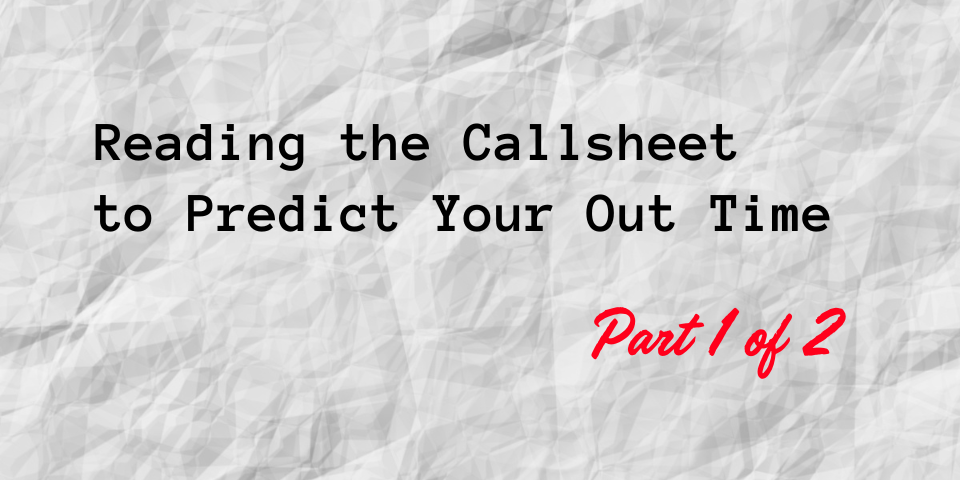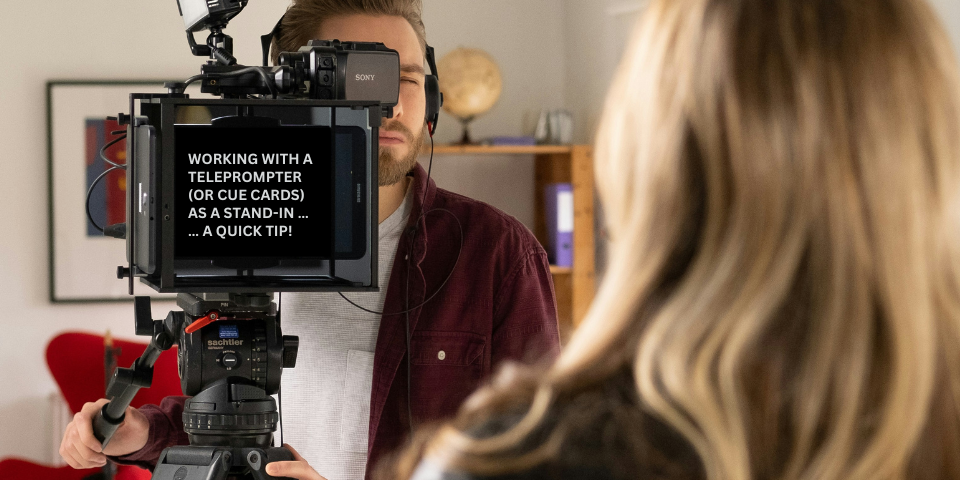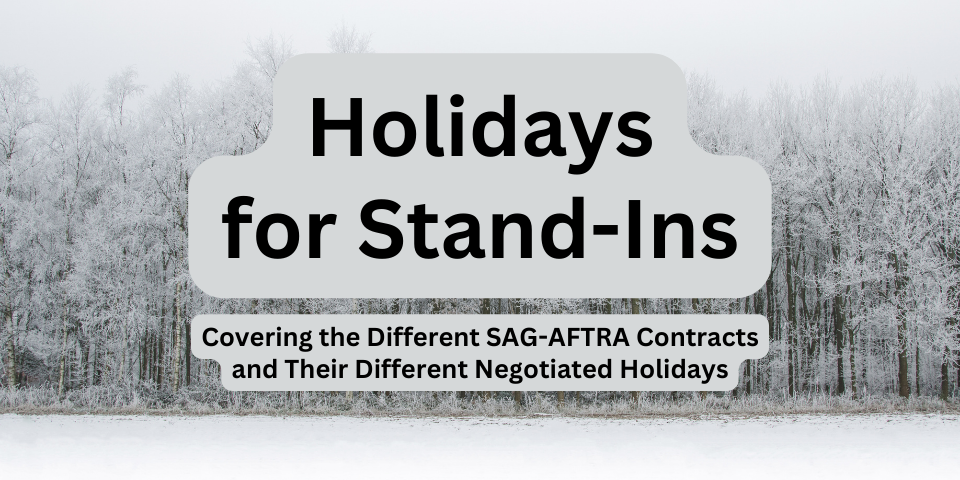With pilot shooting starting to ramp up, you may find you’ve landed a stand-in job on one!
Pilots are the beginning of a television series. Because they’re the beginning, production may not work like clockwork. As a result, you may find yourself jerked around with the production, canceled on stand-in days you were cleared to work or having longer days than you expected.
Here are some quick tips on weathering stand-in work on pilots.
Brace Yourself for Disorganization
When you work on an established production, things usually work like clockwork and are predictable. In general, you know the days you’re standing in, what actors you’re standing in for, and how long your days might be.
However, on pilots, days may change when you’re supposed to stand in, you might be doubled up to stand in for more than one actor, and your days might become nights as shooting days lengthen as a result of surprises in the shoot.
Pilots are trying to get organized. There are a lot of new crew members working together in new ways in line with the demands of the particular script. Not all methods will be worked out by the time shooting begins. Hopefully by the end pilots will be calmer and more orderly.
Keep your expectations buoyant about stand-in work on pilots. If you are standing in for a lead, you may have steady work over the course of the shoot. But if you’re standing in for a supporting actor, you may find your schedule keeps changing or another stand-in gets doubled up to stand in for your actor, leaving you out of a job for some of your cleared days.
Knowing is half the battle. If you’re aware that schedule changes can happen, you can better prepare yourself to book alternate work should you get canceled for a day.
Be Aware of Doubling up Stand-Ins
The practice of having an actor’s stand-in stand in for another actor on a shooting day is called “doubling up.” It can also be called “tripling up” if you end up standing in for three actors. Usually at this point you become a sort of “utility stand-in” for the shoot day.
If there are actors who are alike in height, color, and gender, you may find that you are asked to stand in for your actor as well as those other actors. In other words, if you’re standing in for the lead actor, and if the lead actor looks similar enough to another actor, you might also stand in for that other actor.
This tends to mean longer work days for lead stand-ins. This also tends to mean that stand-ins for supporting actors may get shut out of work on occasion while the lead stand-in is assigned your work.
On an established production, this might not happen — or might not happen as much. But on a pilot, productions may not strictly dedicate stand-ins to actors and protect stand-ins’ work.
Again, knowing is half the battle. If you see a prelim that has two alike actors in different scenes, keep in mind that one stand-in might be covering both actors rather than production having two stand-ins. When you know this is possible, you can brace yourself for other work should you get canceled, or brace yourself for a longer day if you’re doubled up.
Reduce Your Faithfulness in a Pilot
When you interview for and land a stand-in position that doesn’t pan out to be a regular job, it may help your pocketbook if you chase stand-in work as you usually do, despite being “on” this pilot. Submit for stand-in work on other projects, and should the project you landed want to line you up to stand in, you can say yes if you’re still available.
It will probably be understandable to casting and production if you aren’t available to stand in on a project that changes your work schedule and leaves you hanging, or does not provide enough advance notice about stand-in work. This is the casualty of a disorganized pilot: some people may find it more practical to dissociate.
Of course, you are probably less interested in reducing your faithfulness in a pilot if the pilot keeps rewarding you daily with stand-in work. But if there is a lot of jerking around with your schedule, the implied message might be to seek other work if you need to keep the income steady.
Communicate with Other Stand-Ins
If you work closely with the other second-teamers on the pilot, it may help to pass along preliminary information so that all of second team is prepared with the schedule.
In general, share that information with trustworthy stand-ins with a genuine interest in the production schedule and with those who understand how to read a callsheet. Your labor to obtain production information won’t pay off if the stand-ins aren’t really interested in the information or don’t know how to properly interpret callsheets. (For help on reading the callsheets, definitely download The Callsheet Cheatsheet.)
Having preliminary information about a chaotic pilot helps stand-ins to prepare for future work or future cancellation. Other helpful information are one-liners and DOODs (“day out of days”). These documents are harder to come by, but they show the predicted shoot schedule more than the advance at the bottom of a callsheet does. DOODs list the number of days an actor is scheduled to work, which can be helpful in gauging just how long your actor will be on the pilot. One-liners have details about what scenes are being shot on what days — they are essentially snippets of future callsheets, and they can help show what days your actor is expected to work and where the shooting location will be.
Watch for Patterns
While shooting of a pilot may be too short to see any patterns, you may start to notice that a production tends to double up stand-ins, go late, etc. Keeping those patterns in mind, you may be able to softly predict what will happen to your future stand-in work on the project.
Will you likely work, or will you likely be canceled? Will you likely go late? Will you be doubled up? You might be able to predict the answers to these questions by the end of the pilot shoot. But also keep in mind that, given the chaos, anything could be game, and your predictions could be very wrong!
If You’re Canceled and Would Like to Still Work, Let Casting Know
If you’re canceled from a day of stand-in work, especially late in the day, politely let the casting director know to let you know if there’s a stand-in spot on another production the next day. In many cases, casting directors will keep this in mind, even if it doesn’t always pan out with work.
On some occasions, casting directors will simply put you on another project should cancellation on the pilot occur. If you’re okay with that practice, then fantastic! If there’s any concern about being assigned to a different project for the day, let the casting director know.
In almost all cases, that you’ve been canceled is not the fault of casting. Casting is most likely just the messenger. Avoid taking it out on the casting director if you’ve been canceled.
Summary
All in all, the ability to weather schedule chaos when standing in on a pilot hinges on knowing as much as you can going into the job and calibrating your expectations.
Keep your expectations low at the beginning, then adjust them each time you’re privy to information about future shoot days. Avoid feeling 100% confident about any future information on the pilot shoot, and you’ll actually be in a better position to weather it.
That said, if things look bleak for regular stand-in work on the pilot, it may be helpful to seek other work in the meantime. For all you know, seeking other stand-in work may land you with better stand-in work on a long-term job!
How do you weather standing in on pilots? Share your advice below!






Leave A Comment